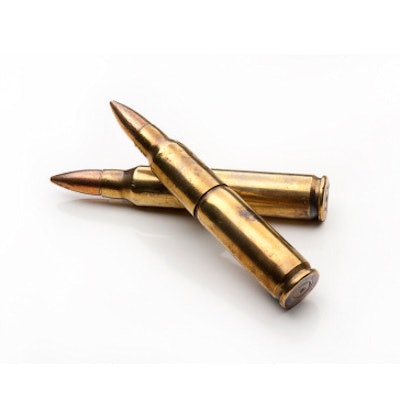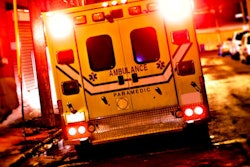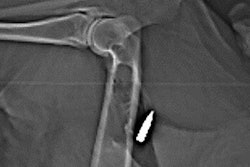
Imaging findings from diagnostic imaging exams could help determine which patients with gunshot injuries are most likely to have future health complications and end up returning to the hospital for additional medical treatment, according to a study to be presented at RSNA 2019 in Chicago.
"Gun violence is a national health emergency and yet there is a profound lack of research on the long-term consequences of gunshot-related injuries," said lead researcher Dr. Corbin Pomeranz from Thomas Jefferson University in Philadelphia in an RSNA statement. "As a level I trauma center, we have an opportunity to study the outcomes for this patient population and to look for ways to provide better care to gunshot victims."
 Dr. Corbin Pomeranz.
Dr. Corbin Pomeranz.To that end, Pomeranz and colleagues analyzed data from 110 patients with prior gunshot wounds who received emergency care at Thomas Jefferson Hospital between January and April of 2018. The average age of these patients was 49.7, and the vast majority of them were men (91.8%). All the patients underwent at least one diagnostic imaging exam.
"Radiology is pivotal in the treatment of these patients because every trauma patient will receive some type of imaging," Pomeranz said. "Creating a regional patient database can provide a wealth of knowledge for improving both gun violence research and patient care."
Among the 36 patients who later returned to the hospital, half of them were readmitted because of health complications associated with their previous gunshot injury. The most common types of injuries were neurologic injuries (67%), followed by abdominal and chest wounds (25%) and major blood vessel injuries (8%).
The researchers' retrospective analysis revealed that there was a statistically significant association between gunshot injuries and hospital readmission rates (p < 0.001). Gunshot wounds leading to visceral injuries (predominantly in the chest and abdomen) were the strongest predictors of a patient being readmitted to the hospital. To be specific, patients who had a gunshot wound that caused a visceral injury were over six times more likely to return to the hospital than those with other types of injuries.
The analysis also showed that the most common procedures for readmitted patients were bronchoscopy to visualize the airways and resection for musculoskeletal infections such as osteomyelitis.
Collectively, the findings suggest that the anatomical location of gunshot injuries has important implications for a patient's long-term health, emphasizing the predictive value of imaging findings, the researchers noted.
"The outcomes of gun violence can only be assessed once we have a firm understanding of injury patterns," Pomeranz said. "A location and injury severity scale based on imaging findings could be used to predict long-term consequences as well as the costs of gunshot wounds."
Ultimately, the group hopes that their study can provide a framework for other medical institutions to build their own imaging databases for patients with a variety of injuries in order to identify those at greatest risk of requiring future medical attention.




















